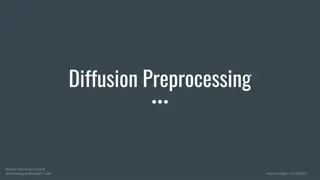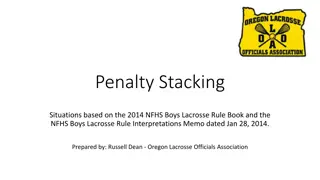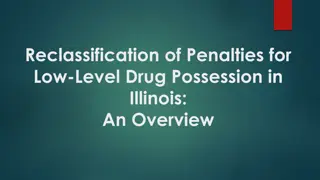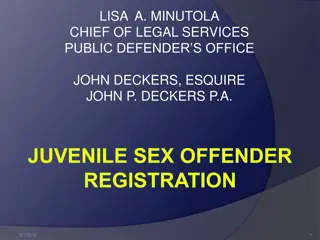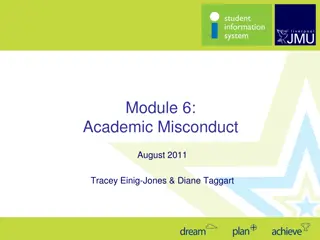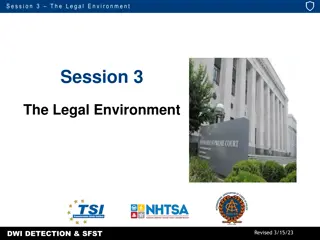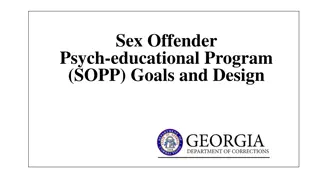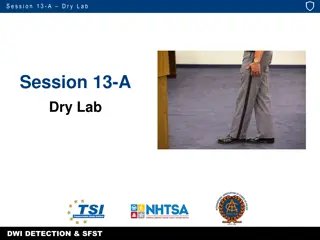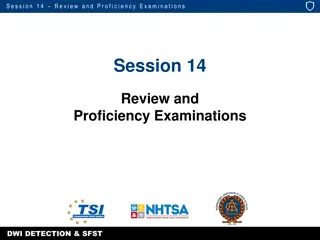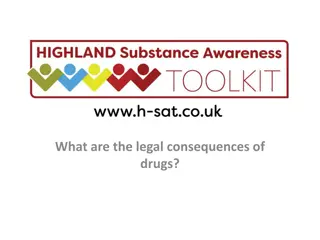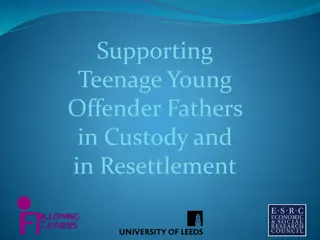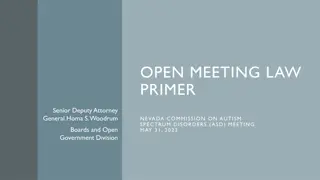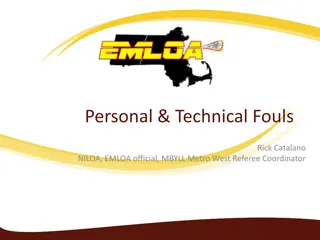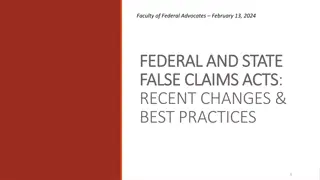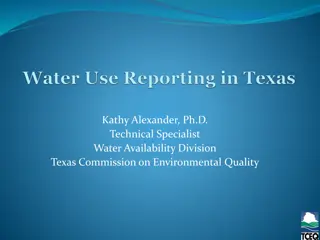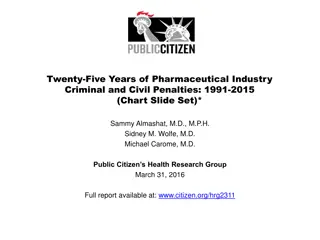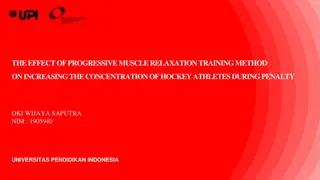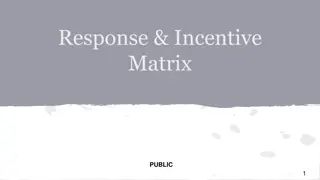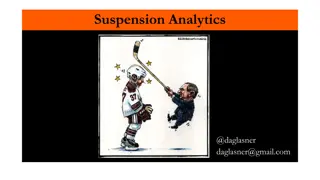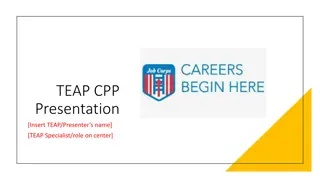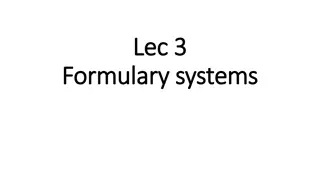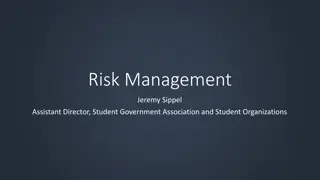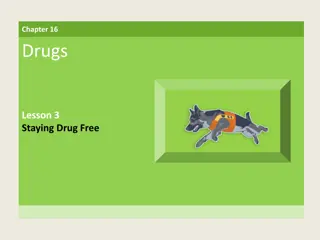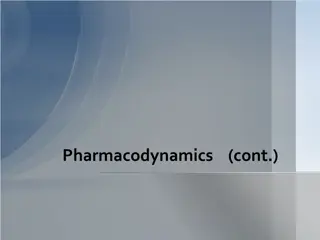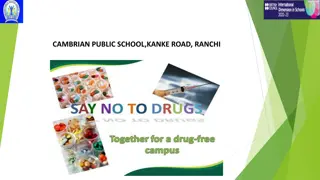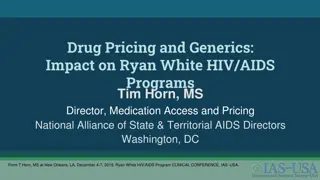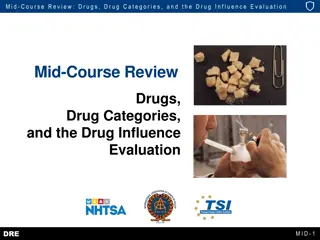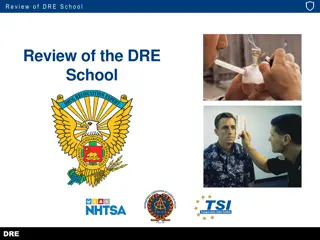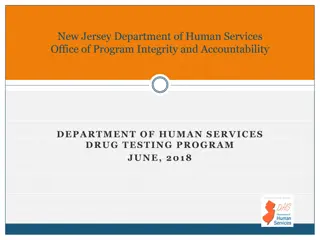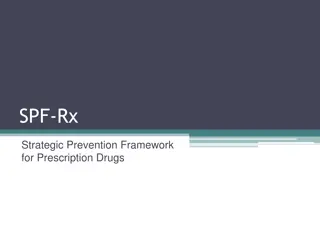Understanding Texas Drug Offender Education Program and DWI Penalties
Explore the Texas Drug Offender Education Program, its course objectives, topics, Controlled Substances Act penalties, DWI penalties, intoxication definition in Texas, additional fines for DWI convictions, and trends in drug use history. Gain insight into the dangers of drug abuse, effects on personal and societal life, and ways to make positive lifestyle changes.
Download Presentation

Please find below an Image/Link to download the presentation.
The content on the website is provided AS IS for your information and personal use only. It may not be sold, licensed, or shared on other websites without obtaining consent from the author. Download presentation by click this link. If you encounter any issues during the download, it is possible that the publisher has removed the file from their server.
E N D
Presentation Transcript
Texas Drug Offender Education Program Department of Licensing and Regulation Offender Education Revised 2019
COURSE PURPOSE To educate participants on the dangers of drug use, abuse and the process of behavior changes. COURSE OBJECTIVES To gain information on the effects of use, abuse and on personal, family, social, economic, and community life, To identify patterns of drug use/abuse, and To develop a plan for positive lifestyle changes. 2
COURSE TOPICS A. Overview and Introduction B. Drugs and the Body C. Abuse and Addiction D. Society and Drugs E. Change 3
Controlled Substances Act Schedule of Penalties & Punishment Ranges Street Name: Crack, Coke, Penalty Group: I Schedule: II Drug Name: Cocaine Blow Possession Penalty Group 1 Less than 1 g. - State Jail Felony 180 days - 2 yrs & $10,000 max 2 - 10 yrs. & $10,000 max 1 g. but less than 4 g. 4 g. but less than 200 g. 200 g. but less than 400 g. - Felony 3 2 - 20 yrs & 10,000 max - Felony 2 5 - 99 yrs or life & 10,000 max - Felony 1 4
DEFINITION OF INTOXICATION IN TEXAS Alcohol concentration of .08% or more Not having normal use of mental or physical faculties because of alcohol or other drugs. 5
DWI PENALTIES IN TEXAS FINES LICENSE LOSS JAIL 1st Up to $2,000 90 days 1 year 72 hrs-180 days 2nd Up to $4,000 180 days 2 years 30 days- 1 year 3rd or more Up to $10,000 180 days 2 years 2 - 10 years 6
ADDITIONAL FINES ON DWI CONVICTIONS 1. DWI, Intoxication Assault, Intoxication Manslaughter Conviction a. $3,000 for first conviction within a 36 month period b. $4,500 for second or subsequent conviction within a 36 month period c. $6,000 on a first or subsequent conviction if BAC was 0.15 or greater at time of test 7
Trends in the History of Drug Use/Abuse Stone Age: Stone Age pots natural fermentation Common use of alcohol from beginning of history Prehistoric berry mash airborne yeast Euphoric effects = crude wine 8
4000 Years Ago Sumerians opium plant of joy Greece and Cyprus, religious rituals opium 2737 BC Chinese knew of marijuana and its medicinal effects and its hallucinogenic effects Ancient Greeks, Romans used poppy capsules to cure ailments Old Testament talks of wine story of Noah. 9
800 Years Ago Aztecs, Mexican Indians peyote, MJ and mescaline religious rituals South American Incas cocoa plant 10
North America, 1700-1900s George Washington & hemp Patent Medicines with opium sold in grocery stores traveling shows Heroin could be ordered from catalogues and was marketed by Bayer Soldier s Disease morphine Laughing gas in 1800s Hypodermic needle & pure cocaine Opium smoking by 1875, epidemic 1884, purified cocaine Coca-Cola Narcotics used by mothers Sears injecting kits - $1.50 11
1920s-1950s Smoking cannabis came from Mexico and South America Marijuana use increased, cocaine decreased MJ and musicians and artists WW II amphetamines for soldiers and pilots Amphetamine as treatment for narcolepsy, weight, and hyperactivity 1943 LSD Dr. Albert Hoffman 12
1960s, 1970s, 1980s Speed and motorcycle gangs MJ and LSD Vietnam War and heroin Cocaine Miami Vice Valium and tranquilizers Designer Drugs, Ecstasy Crack in late 1980s 13
1990s Powdered meth starts to spread from Pacific coast Crack peaks in mid 1990s Ice comes in from Hawaii In Texas, marijuana is most used illicit drug Cocaine is #1 in drug treatment admissions Alcohol is #1 over-all Vicodin frequently abused Rohypnol, GHB, club drugs. Blunt cigars in Texas in 1993 changed patterns of use of marijuana 14
Cocaine remains a problem OxyContin (Hillbilly Heroin) Codeine cough syrup and rap music Methamphetamine scene is changing with limits on pseudoephedrine Abuse of prescription drugs is on the rise by young and old More potent marijuana and effects of smoking more in blunts cigars and bongs Ecstasy use is increasing and it has moved from Raves to the street Increasing problem with young heroin inhalers ( Cheese heroin in Dallas but increases in inhaled heroin are statewide) 2000s 15
CHANGE: Precontemplation (Never Thought About It) Contemplation (Starting To Think About It) Relapse Preparation (Getting Ready) Maintenance Action Recovery 16
Think of a change in your behavior or habits that you would like to consider. Write it down. 17
IMPORTANCE RULER How important is it to you to make this change? If 0 was not important, and 10 was very important, what number would you give? 0 1 2 3 4 5 6 7 8 9 10 Write down the number. 18
CONFIDENCE RULER If you decided right now to ________ , how confident do you feel about succeeding with this? If 0 was not confident and 10 was very confident , what number would you give yourself? 0 1 2 3 4 5 6 7 8 9 10 Write down the number. 19
READINESS RULER On the line below, which point best reflects how ready you are at the present time tomake the change? Not at all ready to ... Thinking about it... Planning and making a commitment to... Actively... 20
HIV The virus that causes AIDS Found in some body fluids Blood, vaginal fluid, semen, breast milk and can be transmitted through contact with blood and other bodily fluids. 21
MYTHS ABOUT HIV You don t get it from a toilet seat, telephone, clothes, or insect bites. You do not get HIV from hugging, coughing, sharing dishes or from casual contact. You get it from blood. 22
HIV TRANSMISSION Unprotected Sex Sharing needles/IV drug use Possibly other drug paraphernalia if it has trace amounts of blood on it (snorting) Mother to child during pregnancy, birth and possibly breast feeding Receiving blood from an infected person Razors, toothbrushes, and other personal hygiene articles that may have blood on them could carry the virus in the blood. 23
IMPAIRED IMMUNE SYSTEM Impairs the immune system and the body s ability to fight infections. Can lead to medical conditions known as opportunistic infections and other serious diseases. 24
Progression of HIV Disease EXPOSURE TO HIV ONSET OF INFECTION AIDS DIAGNOSIS 25
Risk Reduction The following are possible ways that HIV can be transmitted. To reduce your risk, AVOID these activities and situations: Sharing equipment or needles for injecting drugs Sharing tattoo needles or piercing equipment Using unsterile acupuncture needles Exposure to a rash, sore or bleeding skin or gums Unprotected sexual activity, presence of STDs, or multiple sex partners Sexual activities that can cause bleeding Unsafe blood transfusions and unsanitary medical care, unlikely in U.S. but a problem in some developing countries 26
Drugs and Your Brain: Higher Learning Center Higher Learning Center Vital Functions Vital Functions Muscle Control Muscle Control Progression of Drug Effects Sequence of Mental Growth 27
Central Nervous System Central Nervous System 28
PRE-CONTEMPLATION Never Thought About It There is no intention to change behavior. The person is unaware or under-aware of the problem. It isn t that they can t see the SOLUTION-- It s that they can t see the PROBLEM. 29
PRE-CONTEMPLATION The challenge is to raise doubt-- To increase the person s perspective of risk and problems with the current behavior. 30
THE FIVE RS Reveling Reluctance Rebellion Resignation Rationalization 31
CONTEMPLATION Starting to think about change. The person is aware of the costs, but does not want to lose the benefits thus ambivalence and conflict. 32
CONTEMPLATION. Ambivalence is normal change is hard. Most people are ambivalent about many things much of the time. 33
CONTEMPLATION Starting to Think About It The Challenge: Tip the balance Focus on reasons to change Explore risks of not changing 34
ADDICTION IS A BRAIN CHEMISTRY DISEASE The AMA designated Alcoholism as a disease in 1955 Current Medical Thinking refers to other substances in the same light using the terms Abuse and Dependence Everyone s Brain is not the Same! 35
ADDICTION AS A DISEASE IS a. A Primary Problem b. Progressive and Predictable c. A Chronic Condition d. Treatable, but not curable e. Related To Genetics/Family History 36
Signs & Symptoms of Dependence Pattern of use leading to impairment Tolerance - More of the drug needed for desired affect OR less effect with same amount Withdrawal symptoms OR use to avoid symptoms Desire/unsuccessful efforts to cut down Using larger amounts OR for longer period of time than planned Activities reduced/given up because of using Much time spent to obtain, use, or recover Continued use despite problems Any 3 in 12 months reveal dependence. 37
Signs & Symptoms of Abuse Pattern of use leading to impairment Recurrent substance use resulting in problems at work, school, or home. Recurrent use in dangerous situations. Recurrent substance related legal problems. Continued use despite persistent or recurrent social and relationship problems caused or made worse by drug use. One in a 12 month period reveals abuse. 38
RED FLAGS 1. Continued Use Despite Adverse Consequences 2. Preoccupation 3. Family, Work, Money and Legal Problems 4. Tolerance 5. Deterioration of Relationships 6. Withdrawal 39
A DRUG IS A DRUG IS A DRUG Cross Dependence/Cross Addiction Cross Tolerance For recovery the only way to go is complete and total abstinence from all drugs. 40
PREPARATION STAGE When the balance tips, this window of opportunity may only last for a short time. If during this time, a person enters into action, the change process continues. If not, the person slips back into contemplation. 41
PREPARATION STAGE The Challenge: To determine the best course of action to take in seeking change. 42
ACTION STAGE What most people think of as treatment. Here the person engages in particular actions designed to bring about change. Challenge: Take steps toward change. Normally, this takes 3-6 months to complete. 43
MASLOWS HIERARCHY OF NEEDS SELF ACTUALIZATION ESTEEM LOVE/BELONGING SAFETY PHYSIOLOGICAL 44
PHYSIOLOGICAL NEEDS Physical Needs: Food, Water, Air, Sleep, Sex, Movement or Exercise Heart rate, blood pressure, breathing - Homeostasis Physical Safety 45
SAFETY NEEDS Finding Stability in the World Home, Family, Community Psychological Safety 46
LOVE AND BELONGINGNESS Humans have a need to belong to groups Love and Acceptance Relationships/Significant Others Families, tribes, teams, religious groups, clubs, gangs, etc. 47
ESTEEM NEEDS Self-Esteem The Esteem and Recognition Attention of Others 48
SELF-ACTUALIZATION. Pursuing a Path, Vocation, or Calling that Leads to Feeling Whole, Complete and Satisfied with Life. 49
MASLOWS HIERARCHY OF NEEDS SELF ACTUALIZATION ESTEEM LOVE/BELONGING SAFETY PHYSIOLOGICAL 50


